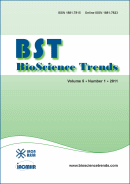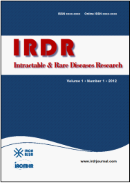Drug Discov Ther. 2017;11(1):1-5. (DOI: 10.5582/ddt.2016.01080)
Silkworm fungal infection model for identification of virulence genes in pathogenic fungus and screening of novel antifungal drugs.
Ishii M, Matsumoto Y, Nakamura I, Sekimizu K
The silkworm infection model has the potential to replace conventional animal models for evaluation of the efficacy and toxicity of investigational antifungal agents. Silkworms are relatively inexpensive, can be simply grown in large numbers and can be easily infected with pathogenic fungi, including mutant strains. Antifungal agents can then be injected into the silkworm either via the hemolymph to mimic intravenous administration or directly into the gut for oral administration, and their antifungal effect can be evaluated. Common features regarding the mechanisms of pharmacokinetics between the silkworm and mammals result in consistent therapeutic effectiveness of antifungal agents. ASP2397, a promising new antifungal agent, was discovered using the silkworm model. The conclusion is that silkworms can be a more ethical and less expensive alternative to standard animal models, particularly for the identification and testing of new antifungal agents.







